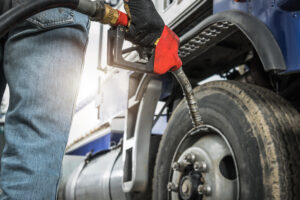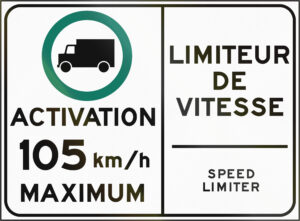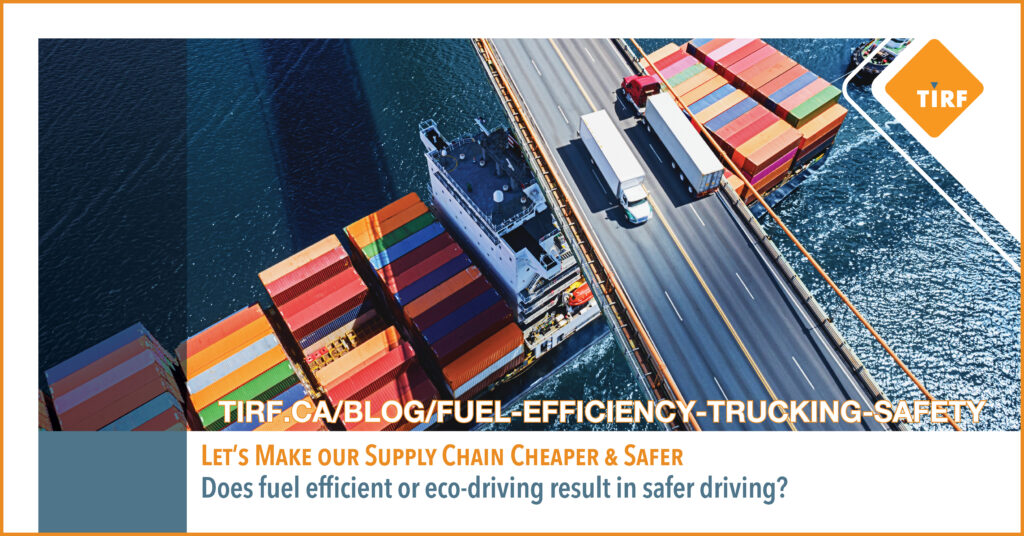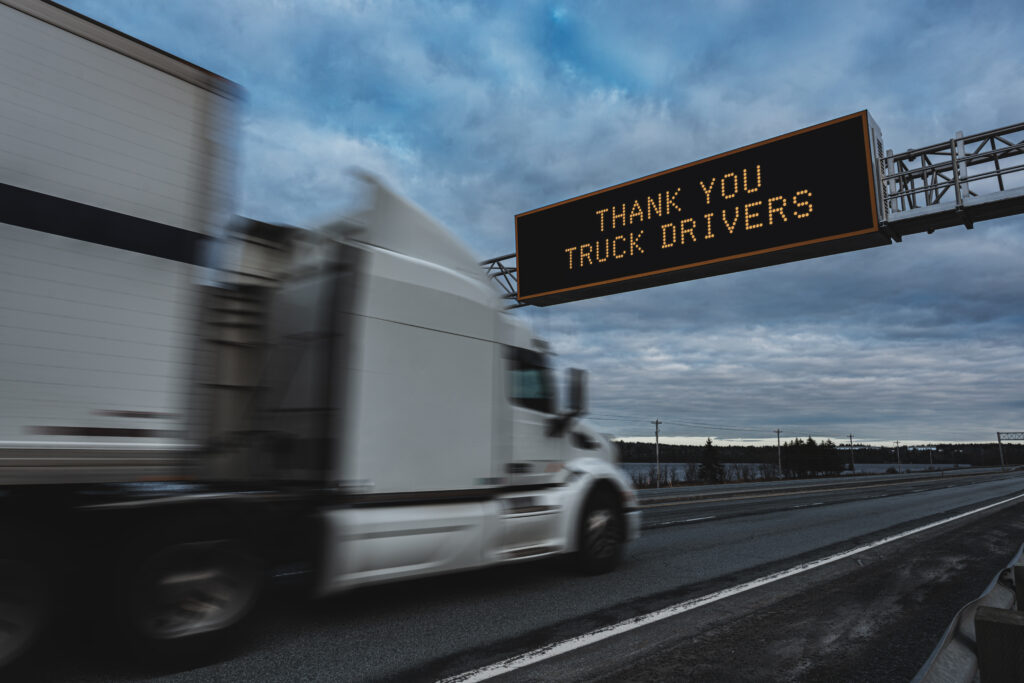Does fuel efficient or eco-driving result in safer driving?
It comes as no surprise that the worldwide supply chain of materials and goods (and all our Amazon Prime deliveries) would grind to a halt without the trucking industry. The costs for consumers are directly impacted by the number of stops in the supply chain, and the transportation costs of getting from point A to point B.
Two of the largest expenditures for trucking companies today are fuel consumption along with vehicle maintenance and repairs from wear and tear, and collisions. The good news is that efforts by the trucking industry to control costs can result in financial savings along each stop in the supply chain and, ultimately, for consumers. As such, some companies are encouraging drivers of big rigs to adopt an eco-driving style when traversing the vast and diverse roadways of North America, because it just makes economic sense.
So, what is an eco-driving style?

Now, many of us have had the experience of gradually pulling away from an intersection when the light turns green only to be left in the dust of a rapidly accelerating vehicle beside or behind us. It’s also usually no surprise to see that same vehicle sitting at the next red light as you gradually pull up. What is perhaps more of a head-scratcher is when the driver repeats the behaviour when the signal turns green, only to again end up sitting at the next red light. You don’t need to be an engineer to know the drag racer consumes more fuel, wears out their brake pads sooner, and puts everyone on or near the roadway at risk.
It isn’t cheap to operate a big rig
Fuel. The price of fuel fluctuates almost daily it seems, but it has remained exceptionally high in the last few years. I’m old enough to remember in the mid-1960s that gasoline in the U.S. cost around $.20/gallon (so, that’s just $.06/litre). The 1950s commercial jingle, See the U.S.A. in your Chevrolet was a relatively inexpensive reality. And unbelievably, diesel fuel was cheaper than gasoline! Those days are long gone, and it can now cost more than $90 (Cdn) to put gasoline in a 50-litre or 14-gallon tank of a mid-size car.


What can employers (and really all of us) do today?

This also means operating the vehicle smoothly and avoiding a lot of acceleration or deceleration and using cruise control where possible. In principle, traffic lights at many moderate-volume intersections are timed to enable vehicles to drive the speed limit from one intersection to the next without encountering a red light. Similarly, on a congested highway, try slowing down and keeping more of a steady pace instead of speeding up quickly only to stop quickly, which also prolongs the congestion. Finally, if you are driving a longer trip in the vehicle, plan your route to avoid a lot of intersections, turns and hills, if it’s feasible to do so, since this will help you keep a more consistent speed.
Eco-driving = fewer collisions
According to a recent study by the Traffic Injury Research Foundation, not only can eco-driving reduce fuel consumption and emissions, but it delivers safety benefits that ultimately increase productivity, reduce crashes, and lower insurance premiums. The study funded by Natural Resources Canada’s Greening Freight Program showed that eco-driving increases safety by reducing the odds of both hard braking or stability control events and actual collisions. Reducing hard-braking events also saves on brake wear that requires earlier than anticipated maintenance and helps ensure optimally safe braking.
Key outcomes of the study revealed eco-driving of big rigs can result in:
- 7% reduction in the odds of a hard braking event
- 8% reduction in the odds of a hard left-turn event
- 8% reduction in the odds of a hard right-turn event
- 4% reduction in the odds of a collision
- 34% reduction in stability control events by driving in top gear with steady speeds close to 101 km/h
- 3% reduction in hard braking events with a 1% increase in the amount of time using cruise control

We can all agree that the trucking industry is critical to maintaining a reliable supply chain to keep the economy moving (literally and figuratively). Leadership and initiatives to more consistently adopt fuel-efficient and eco-driving practices not only reduce costs, but also make roads safer for everyone and help the environment.
About the project: The Traffic Injury Research Foundation (TIRF) with funding from Natural Resources Canada provided the information for this article by conducting a 2022 study on trucking fleets to quantify the safety benefits of fuel-efficient driving. Most companies in the study utilized in-vehicle technology to measure driver performance.
#MySafeRoadHome author bio: Carl Wicklund, TIRF USA Senior Advisor, has 50 years of experience in the criminal justice/corrections/human services field. He previously developed and managed several community-based programs for justice-involved individuals, served as Court Services Director for a three-county community corrections system, was for 20 years the Executive Director of the American Probation and Parole Association, and more recently was Director of the Community Justice Division of Volunteers of America – Minnesota/Wisconsin. He has been an active member of TIRF’s Working Group on DWI System Improvements since its inception in 2004.
Source documents and resources:
Research study to quantify the safety benefits of fuel-efficient driving – Project recruitment information https://tirf.ca/download/nrcan-research-study-fuel-efficient-driving-safety (Traffic Injury Research Foundation, Dec. 2022, funded by Natural Resources Canada)
Quantifying the Benefits of Eco-Driving for Transportation Employers https://tirf.ca/download/quantifying-benefits-eco-driving-employers (Traffic Injury Research Foundation, June 2023) En francais
Fuel Efficiency Benchmarking in Canada’s Trucking Industry https://natural-resources.canada.ca/energy/efficiency/transportation/commercial-vehicles/reports/7607
The State of Fuel Economy in Trucking https://www.geotab.com/truck-mpg-benchmark
Related topics:
 |
 |
 |
 |



